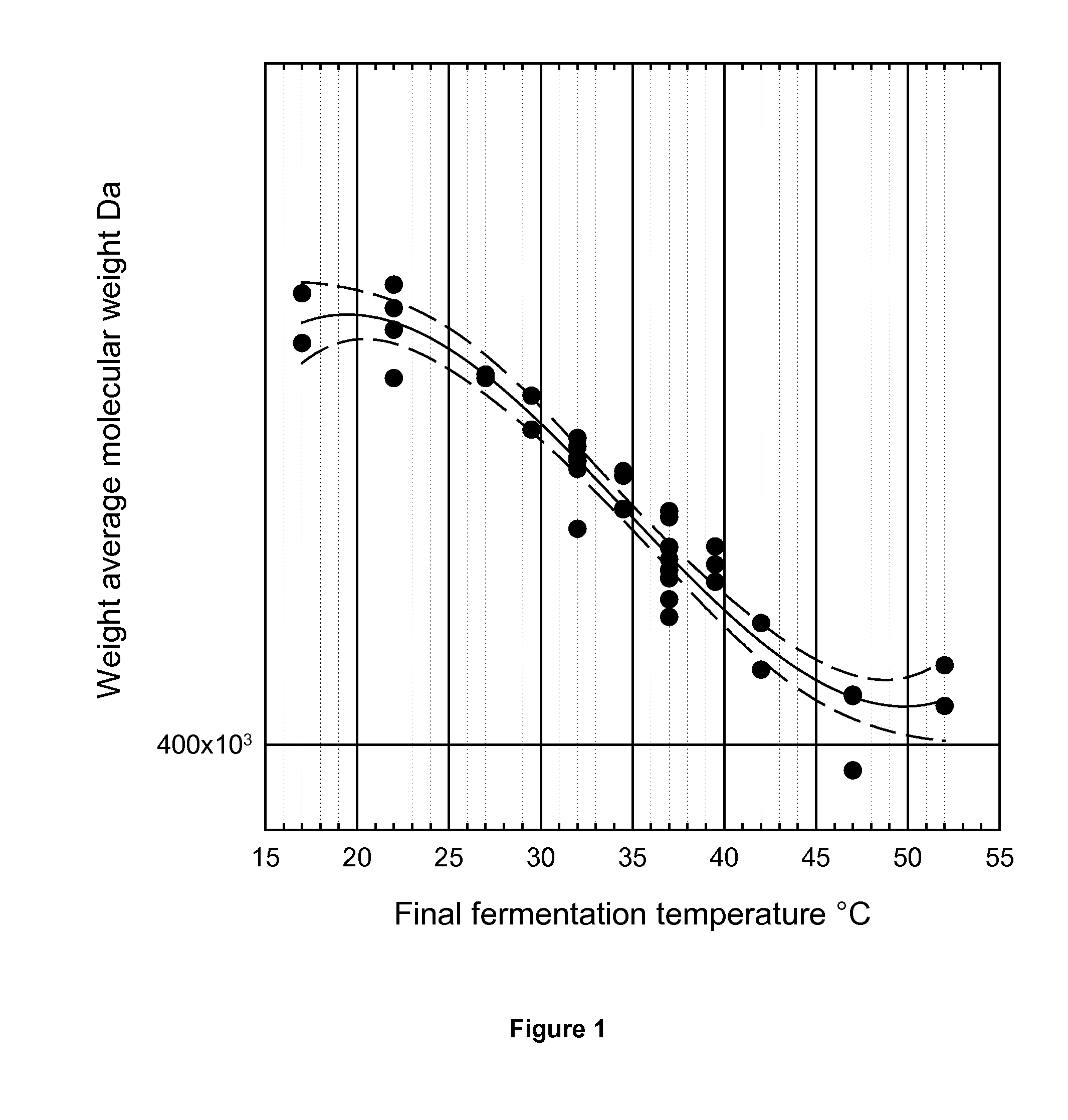Production of low molecular weight hyaluronic acid
a hyaluronic acid, low molecular weight technology, applied in the direction of fertilization, etc., can solve the problems of not being suitable for small molecules, not being able to achieve the resolution of membrane fractionation, and difficult to implement such methods at anything much larger than the laboratory scale, so as to reduce the molecular weight
- Summary
- Abstract
- Description
- Claims
- Application Information
AI Technical Summary
Benefits of technology
Problems solved by technology
Method used
Image
Examples
example 1
[0108]A recombinant Bacillus strain was constructed as disclosed in detail in WO 2003054163, the contents of which relating to strain construction is incorporated herein by reference. This strain was then cultivated as follows: First a seed stage on agar at a constant temperature, then a seed stage in a stirred tank at constant temperature, and finally a fed batch main fermentation in a stirred tank at an initial temperature favourable for growth of the Bacillus strain, e.g., 37° C. Later, after the initiation, the fermentation temperature was shifted up or down in separate experiments to various other sets of temperatures in the range of 17-52° C. The temperature was then kept constant over a period of 7 hours, following the initiation of the fed batch phase.
[0109]The Bacillus strain was fermented in standard small fermenters in a medium composed per liter of 6.5 g of KH2PO4, 4.5 g of Na2HPO4, 3.0 g of (NH4)2SO4, 2.0 g of Na3-citrate-2H2O, 3.0 g of MgSO4.7H2O, 6.0 ml of Mikrosoy-2,...
PUM
| Property | Measurement | Unit |
|---|---|---|
| average molecular weight | aaaaa | aaaaa |
| temperature | aaaaa | aaaaa |
| average molecular weight | aaaaa | aaaaa |
Abstract
Description
Claims
Application Information
 Login to View More
Login to View More - R&D
- Intellectual Property
- Life Sciences
- Materials
- Tech Scout
- Unparalleled Data Quality
- Higher Quality Content
- 60% Fewer Hallucinations
Browse by: Latest US Patents, China's latest patents, Technical Efficacy Thesaurus, Application Domain, Technology Topic, Popular Technical Reports.
© 2025 PatSnap. All rights reserved.Legal|Privacy policy|Modern Slavery Act Transparency Statement|Sitemap|About US| Contact US: help@patsnap.com

